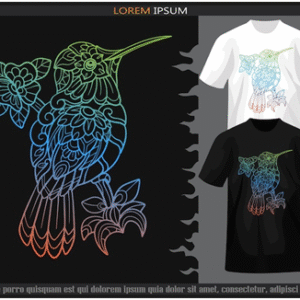In today’s fast‑moving automotive retail environment, the term “Dealer AI” is gaining traction — referring to the use of artificial intelligence specifically by automotive dealers (sales & service) to accelerate engagement, conversion, and operations. With the rise of platforms like BDC.AI, Dealer ai is becoming less of a futuristic concept and more of a practical imperative.
This article explores what Dealer AI means for a dealership, how it works, why it matters, how to implement it effectively, and what the future holds — anchored in insights from BDC.AI’s content.
What is Dealer AI?
At its core, Dealer AI is the deployment of AI systems tailored for the dealership’s business model — i.e., for the sales floor, business development center (BDC), service department, customer engagement workflows, follow‑ups, appointment setting.
According to BDC.AI’s description of what they do: they are the “#1 Trusted AI BDC For Car Dealers.”
In other words, Dealer AI encapsulates:
-
AI agents (chat, voice, text) that respond to leads instantly, set appointments, follow‑up, route calls.
-
Integration of AI with dealer systems (CRM, DMS) to enable seamless workflows and data‑driven decisions.
-
Automation of the “first mile” of the customer journey — from inquiry to appointment.
-
24/7 availability: engaging customers outside traditional business hours
Thus, Dealer AI is not just a chatbot or a voice assistant — it is an orchestrated intelligent system that supports a dealership’s growth engine.
Why Dealer AI Matters to Dealerships
For dealerships, the business challenges are well documented: leads coming in from multiple sources (website forms, phone, chats, social), high customer expectations for fast responses, pressure on staff, follow‑up fatigue, missed opportunities, need to convert showroom visits into sales.
Dealer AI addresses many of these pain‑points:
-
Speed to lead: One key metric BDC.AI emphasises is “Lead Response Time < 60 seconds.” Slow responses lose leads — AI ensures instant engagement.
-
Always‑on availability: With Dealer AI, customers can be engaged 24/7/365 — meaning no leads are lost outside standard hours.
-
Automation + human synergy: AI handles high‑volume, repetitive tasks; humans handle high‑touch, complex conversations. BDC.AI describes this as “Human + AI Synergy.”
-
Cost savings & scalability: According to BDC.AI, their platform can reduce BDC overhead up to ~60% and handle many more interactions.
-
Improved conversion metrics: BDC.AI reports performance benchmarks such as higher appointment show‑rates, improved conversion, and better lead engagement.
-
Brand consistency and personalization: Dealer AI allows the dealership to maintain brand tone across channels, personalise messages, qualify leads effectively.
In short, Dealer AI can be a strategic differentiator — for speed, efficiency, customer experience, and ultimately revenue.
How Dealer AI Works — Key Features
Let’s break down the operational features of Dealer AI (drawing on BDC.AI’s platform) and how they make a difference for dealership teams.
-
Instant Multi‑Channel Engagement: When a lead comes in — via form, chat, phone, SMS — the AI agent responds in seconds. BDC.AI touts an average response time of ~2 seconds.
-
Omnichannel & Multilingual: The system operates across SMS, email, chat, social, voice calls — meeting the customer where they are.
-
Lead Qualification & Routing: Dealer AI asks qualifying questions automatically, scores leads, determines intent, then routes to human or schedules an appointment.
-
Appointment Scheduling Automation: It integrates with dealers’ calendars (and DMS/CRM) to schedule test drives or service appointments, send confirmations and reminders.
-
Integration with Dealer Systems: Dealer AI connects with CRM, DMS, inventory feed systems, telephony – enabling real‑time updates and avoiding data silos.
-
24/7 Availability: Because AI doesn’t rest, the dealership’s interaction window expands dramatically.
-
Data, Analytics & Continuous Optimization: The system tracks KPIs (response times, appointment show‑rates, revenue per lead etc.), enabling the dealer to refine scripts, workflows, and performance.
-
Brand Customization: The AI agents can be tailored to the dealership’s tone and voice — critical for customer perception.
Implementing Dealer AI Successfully — Best Practices
Deploying Dealer AI is more than installing a tool. The performance depends on process, culture, data and human integration. Here are best practices informed by BDC.AI content and broader industry insight.
-
Define Clear KPI’s Before Launch
BDC.AI lists important KPI targets for BDCs: Lead Response Time < 60 seconds, Contact Rate 50–70%, Appointment Set Rate 25–35%, Appointment Show Rate 65–80%. Use these as your benchmark. -
Ensure System Integration & Data Hygiene
Dealer AI relies on CRM, DMS & telephony connectivity. Data has to be clean, consistent, updated. Poor data undermines performance. -
Customize for Your Dealership’s Brand & Processes
Every dealership has its unique tone, process, workflows. The AI system must reflect that — from how it speaks to customers, to how it routes leads internally. -
Map Human‑AI Handoff Rules
Define when the AI hands off the conversation to a human (e.g., high‑intent purchase inquiry, negotiation, financing questions). BDC.AI emphasises “escalation triggers” where human agents take over.
Make sure your staff are trained to pick up seamlessly when AI escalates. -
Training & Change Management
Staff must understand how Dealer AI fits in — it supports them, rather than replaces them. Change management helps avoid resistance and aligns everyone. -
Monitor & Optimise Continuously
Use dashboards and analytics to identify drop‑off points (leads responded but not scheduled; appointments scheduled but no show). The AI and human workflows should be refined over time. BDC.AI emphasises “Continuous Optimization”. -
Ensure Quality Customer Experience
While speed and automation matter, the human experience still matters. The AI must feel helpful, not robotic. The customer must feel valued. Dealer AI must support the human‑centric selling process.
Challenges & Considerations
As with any transformative tool, Dealer ai comes with challenges. Dealerships must be aware of these to avoid pitfalls.
-
Data quality and system fragmentation: If CRM or DMS data is outdated or fragmented, the AI will struggle to perform.
-
Customer perception of automation: Some customers may prefer human interaction for high‑value decisions. AI must be deployed sensitively and with appropriate human hand‑off.
-
Human staff adaptation: Sales and BDC staff must adapt to new workflows and roles (less manual chasing, more closing).
-
Over‑reliance on AI without process redesign: Simply layering AI on old workflows won’t necessarily deliver. The entire lead‑to‑sale process may need redesign.
-
Security and compliance: Because Dealer AI systems handle customer data, call recordings, lead routing — ensuring privacy, security, and regulatory compliance is essential. BDC.AI emphasises SOC 2 compliance.
-
Measuring ROI and expectation management: Dealers must assess costs (software subscription, integration, training) vs. benefits (higher conversion, lower cost per sale) and adapt accordingly.
The Future of Dealer AI
Looking ahead, Dealer AI will deepen and expand in multiple directions.
-
Hyper‑Personalization: Dealer AI will draw from browsing behaviour, inventory interactions, service history, and delivery timing to engage customers with even more relevance.
-
Lifecycle engagement: Not just sales leads — Dealer AI will increasingly engage service, parts, trade‑ins and loyalty programmes — making the dealership experience continuous.
-
Deeper integration with Vehicle & Ownership Data: As vehicles become more connected, Dealer AI might leverage live vehicle data to trigger outreach (e.g., service reminders, upgrade offers).
-
Voice & conversational AI advancements: Natural‑language voice agents will get better at understanding intent, emotion and context — inside phone calls, video chats, in‑store kiosks.
-
Human + AI teams as standard: The future model will see AI handling scale; humans focus on relationships and closings — as BDC.AI emphasises “Human + AI Synergy”.
-
Competitive differentiation through experience: As many dealers adopt Dealer AI, the differentiator will shift to how well they integrate it into a seamless customer journey — not just having the AI.
In the evolving automotive retail environment, Dealer ai is no longer optional — it’s a strategic requirement for modern dealerships that want to remain competitive and meet customer expectations. Platforms like BDC.AI illustrate how Dealer AI works: instant responses, omnichannel engagement, automated scheduling, deep system integration, continuous data‑driven optimization, 24/7 availability and scalability.
By implementing Dealer AI with the right strategy — clear goals, system integration, process redesign, human‑AI handoff logic, and continuous optimization — dealerships can convert more leads, drive more appointments, improve conversions, reduce overhead, and offer a superior customer experience.


